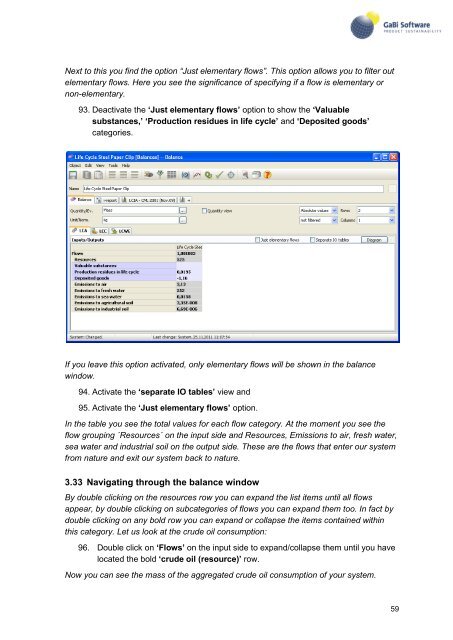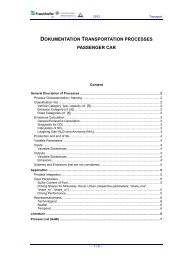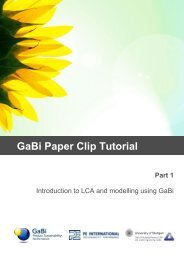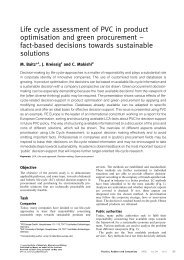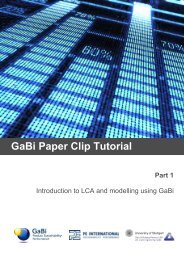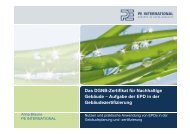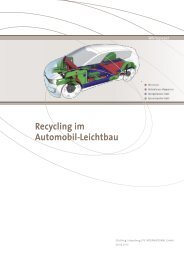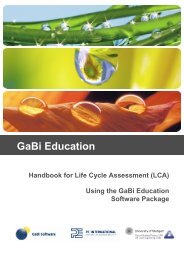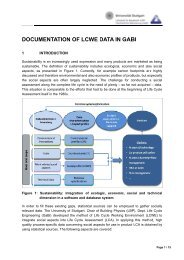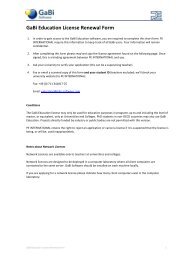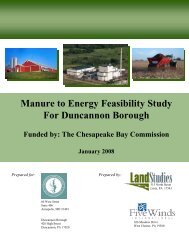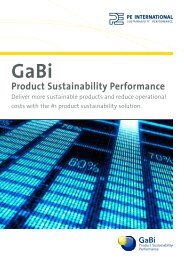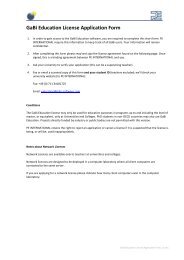GaBi Paper Clip Tutorial - GaBi Software
GaBi Paper Clip Tutorial - GaBi Software
GaBi Paper Clip Tutorial - GaBi Software
You also want an ePaper? Increase the reach of your titles
YUMPU automatically turns print PDFs into web optimized ePapers that Google loves.
Next to this you find the option “Just elementary flows”. This option allows you to filter out<br />
elementary flows. Here you see the significance of specifying if a flow is elementary or<br />
non-elementary.<br />
93. Deactivate the „Just elementary flows‟ option to show the „Valuable<br />
substances,‟ „Production residues in life cycle‟ and „Deposited goods‟<br />
categories.<br />
If you leave this option activated, only elementary flows will be shown in the balance<br />
window.<br />
94. Activate the „separate IO tables‟ view and<br />
95. Activate the „Just elementary flows‟ option.<br />
In the table you see the total values for each flow category. At the moment you see the<br />
flow grouping ´Resources´ on the input side and Resources, Emissions to air, fresh water,<br />
sea water and industrial soil on the output side. These are the flows that enter our system<br />
from nature and exit our system back to nature.<br />
3.33 Navigating through the balance window<br />
By double clicking on the resources row you can expand the list items until all flows<br />
appear, by double clicking on subcategories of flows you can expand them too. In fact by<br />
double clicking on any bold row you can expand or collapse the items contained within<br />
this category. Let us look at the crude oil consumption:<br />
96. Double click on „Flows‟ on the input side to expand/collapse them until you have<br />
located the bold „crude oil (resource)‟ row.<br />
Now you can see the mass of the aggregated crude oil consumption of your system.<br />
59


